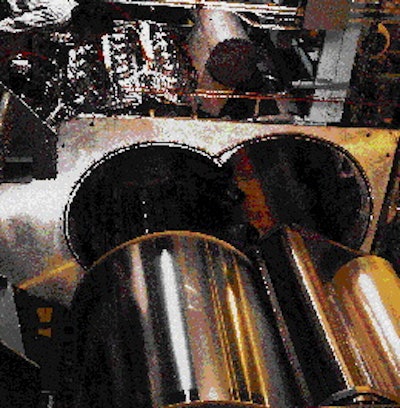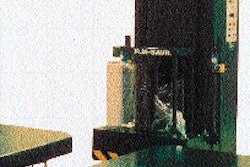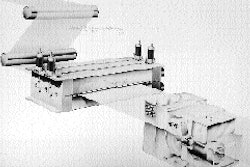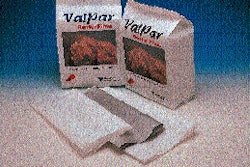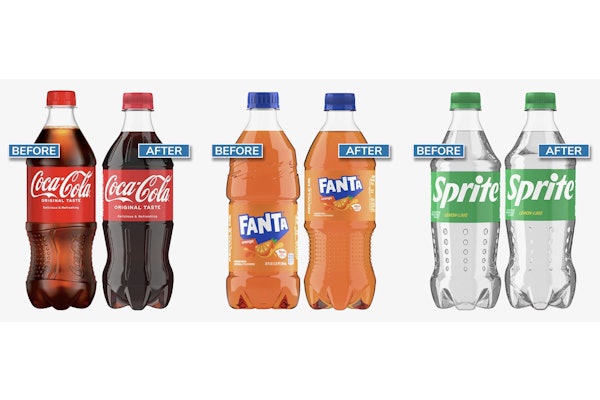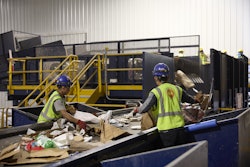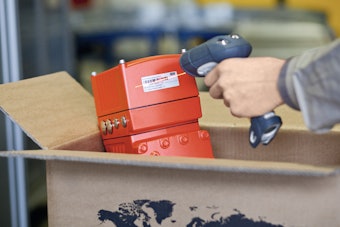Silica-coated films, often referred to as "glass-coated" films, have attracted plenty of attention in the past few years, first in Japan and more recently elsewhere. They have better barrier properties than some conventional high-barrier coextrusions and laminations, and, unlike that superb flexible barrier material known as foil, they're perfectly clear. They're also costly. In the Japanese marketplace, where consumers have repeatedly demonstrated their willingness to pay a premium for unique, convenient or value-added packaging, glass-coated films are found in retort pouches and other forms of food and beverage packaging. But U.S. food and beverage applications have resisted. Not only are consumers reluctant to pay a premium for packaging, they don't like retort pouches. Before Ener-G Foods of Seattle began using its silica-coated polyester/nylon bags (see adjacent story), about the only commercially available food or beverage package in the U.S. incorporating a silica-coated film is the gabletop carton used by Chiquita for its juices (see PW, April '95, p. 24). Applications of glass-coated films in medical packaging, however, have caught on in this country. A good example is an intravenous solution in a polyvinyl chloride pouch. The pouch is sterilized while inside a secondary pouch material, historically a foil or foil laminate capable of keeping unsterile air from reaching the IV pouch. But because foil isn't transparent, the outside pouch must be labeled, and any time another label is introduced, a chance for error comes with it. So a clear outer pouch with high barrier has enormous appeal. There's no need for a label because the label on the IV pouch is plainly visible. Plus the value and quality demands of a medical product are such that, compared to a food product, material costs are far less significant. And the future? So what about the future? Will glass-coated films ever find large-scale U.S. applications outside the medical industry? Yes, says PC Materials (Mt. Bethel, PA), the firm that supplies the silica-coated polyester in the bag used by Ener-G Foods. But only if the materials become cost competitive with other barrier materials. PC believes it has found a way to do just that, and at recent packaging conferences the firm has described its technology, known as low-temperature plasma coating. The key difference between PC and most other processes that make silica-coated film is that PC does not rely on evaporation. In an evaporative deposition process, solid quartz is thermally evaporated with an induction heater or electron beam gun in a vacuum chamber that has been pumped down to 10-3 or 10-4 torr. ("Torr" is a unit in which pressure is measured.) The evaporated glass mechanically bonds itself to the plastic film traveling over a chilled drum. According to PC general manager Harley Allison, this method has some drawbacks, including the high cost of quartz and the fact that the coating adheres not only to the film but to the chamber itself, thus necessitating frequent cleaning. Allison also says the energy required to thermally evaporate the quartz is high, and because the coating is mechanically, not chemically, bonded to the film, it's fragile. Low-temperature plasma coating is considerably different, though it has at least one thing in common with the evaporative method: it involves a vacuum chamber machine. The equipment currently running at PC's plant was used formerly in the metallizing business, though it's been modified significantly. The atmosphere in the chamber is only pumped down to 10-1 torr. This requires less time and less energy than is needed in the evaporative method. With the lower vacuum comes less energy consumed and lower temperatures than with other plasma processes used in other industries, which is why PC refers to it as "low-temperature" plasma coating. Film being coated travels from an unwind roll to an idler roller to a dancer roller to the coating drum to a dancer roller to an idler roller and then to the finished film take-up roll, so film tension is under control at all times. The equipment currently running in PC's plant accepts film that's 40" wide. While the evaporative deposition method uses quartz as its source material, the PC process derives silica from hexamethyldisiloxane (HMDSO) and polymerizes it on the surface of a plastic film. HMDSO is a liquid organometallic used commonly in the microelectronics industry for manufacturing silicon wafers, or microchips. It costs about $24 per kilogram, says Allison, compared to $1ꯠ per kg for quartz. The HMDSO is heated to about 90° F until vaporized. The vapor is pumped through a manifold into the vacuum chamber, where it settles immediately on the surface of the film. Nitrous oxide, too Also sent into the chamber is nitrous oxide, N2O. It's sent through tubes around which coils of copper are wound. The coil carries 13.56 megahertz of radio frequency energy that does two things. First, it separates the O from the N2O, creating what Allison calls "elemental oxygen" in the chamber. Second, it ionizes the nitrous oxide into a plasma. Plasma is a gas-like collection of charged particles that differs from a gas because it conducts electricity and is affected by a magnetic field. The plasma enters the chamber through ten zones arranged around the circumference of the chamber from about two o'clock to ten o'clock. "It amounts to one big chamber where you're constantly adding and taking away gases," says Allison. Inside the chamber, the HMDSO vapor and the plasma undergo a complex series of changes in molecular structure brought about by radio and audio frequency energy charges. The end result is that the methyl groups, CH3, are stripped from the HMDSO and recombined to form CO2, CO and moisture vapor, all of which are pumped out of the chamber. What remains of the HMDSO vapor on the surface of the film is silica, or SiO2. An audio frequency energy charge causes the silica to sputter off the film and back up into the atmosphere of the chamber, where it reacts with elemental oxygen to form positively charged molecules. As the silica sputters off the film surface, negatively charged molecular bonding sites are created on that surface, and these sites draw to them the positively charged molecules that include SiO2. In this way, the silica is chemically bonded in molecular chains on the film surface. 500'/min is the goal Currently PC runs film through its coating process at about 150'/min. The goal is 500'/min. When it's reached, Allison feels the pricing picture will be competitive with other barrier films. "At 500 feet per minute, we can sell coated polyester for about three cents more per one thousand square inches than the base film," says Allison. And how does PC's silica-coating measure up when compared to other barrier materials available? It's difficult to compare with ethylene vinyl alcohol because that material is usually coextruded with other film layers. Comparisons of barrier coatings are imprecise, too, since coating weights are not always predictable. But where metallizations, coatings and EVOH coextrusions are "typical," says Allison, the following oxygen transmission rates, all measured in cc/100 sq"/24 hrs, hold true: * EVOH coextrusion: 0.015 cc * 48-ga polyester with 200-angstrom silica coating: 0.04 cc * 48-ga metallized polyester: 0.08 cc * 48-ga polyester with PVDC coating: 0.5 cc * 48-ga OPP with PVDC coating: 1.0 cc Allison also observes that although the EVOH coextrusion in this comparison outperforms the silica-coated polyester, that's under dry conditions. If EVOH is exposed to moisture, the barrier properties are significantly weakened. PC markets its silica-coated films under the Simplicity® brand. Markets Allison has targeted include microwave-transparent retort pouches and lidding stock for shelf stable foods, meat and cheese packaging, bag-in-box applications, and the medical and pharmaceutical industries. Because Allison believes glass-coated films don't have the functional shortcomings that competitive barrier films have, "It's logical to believe that 25% of the existing barrier material market is amenable to change to glass-coated packaging films," he told a recent European packaging conference. "In the U.S. this is over 200ꯠ lb of glass barrier films." Allison is first to admit that his firm, launched in 1992, has been slower than anticipated in reaching full commercial status. But there have been time-consuming lessons to be learned. For instance, initially PC planned to offer silica coatings in varying thicknesses on either polyester or oriented polypropylene. But it's adopted more of a one-size-fits-all philosophy: It has backed away from OPP and the only coating thickness offered is 200 angstroms. Polyester is more readily coated and has better barrier properties than OPP. As for the coating thickness, Allison says that with a coating thicker than 200 angstroms, the molecular bond of the silica to the film surface is not as tight, so fracturing becomes a problem. Process improvements are ongoing, says Allison, and future plans call for a second 40'' coating system followed by a 30" system after that. Like the 40" system running now, both will be chambers originally used in the metallizing industry. Allison also sees future developments in rigid containers, PET specifically. "Our coatings in the range of 1귔 angstroms improve the oxygen barrier of blow-molded polyester bottles by eight times," he says. But flexible films will come first, as Allison predicts full commercialization status by year's end.
